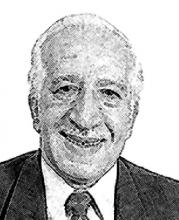You are here
‘The greatest loss’ in Syria
Sep 03,2016 - Last updated at Sep 03,2016
The Daraya scenario, which was implemented by Damascus last week, is about to be rescripted in six more rebel-held suburbs of the Syrian capital, only kilometres from the presidential palace.
Daraya Sunni fighters had to surrender their heavy weapons and move to Idlib, in the north, to join other fighters, while the 4,000 Sunni civilian population had to leave their bombarded, destroyed city and accept to be relocated to new areas.
The same script is repeated in Muazamiyyah whose 40,000 Sunni civilians will be relocated to new areas and whose fighters, with their personal weapons, will be transported to Idlib, where their higher command is stationed.
The other rebel held areas, including Harasta, will meet the same fate: eviction of their Sunni population.
The Syrian army has been advancing for many months in a systematic way, keeping the capital totally sanitised of salafist fighters, whether in the neighbourhood of the presidential palace or adjacent to the international airport.
The old Syrian adage spells out coherently: whoever controls Damascus, controls all of Syria.
The ethnic cleansing of Sunnis in the capital and encouraging Alawites to settle in their regions is part of the new scheme that redraws Syria’s map; the result will be enclaves, ethnic corridors for the Syrian Kurdish Democratic Union Party and its Rojava vision, and homogenous cities allocated to Sunnis, Alawites, Kurds and other minorities.
Just as the Kurds feel abandoned now by their Washington patrons, fighters in Daraya and Muazamiyyah have felt abandoned since last September when Russia, with its air force and ballistic missiles, decided to bail out President Bashar Assad.
The message to the salafist fighters was delivered sound and clear: Assad will not be defeated.
When anti-aircraft or surface to air missiles were denied to the jihadists, the writing became visible on the wall.
CNN reported last week that the total of people killed and injured in Syria during the last five years exceeds 2 million; over 8 million Syrians are either refugees or have been displaced.
The hundreds of thousands who were killed and the millions who suffer the humiliating inferno of exile, deprivation and degradation represent a great loss.
But the greatest yet is the loss of national sovereignty to the Iranians, at the beginning, then to the Russians, who established in Latakia their naval and air bases, and then to the Turkish army, which established a 400-square-kilometre safe haven in the region adjacent to the border.












